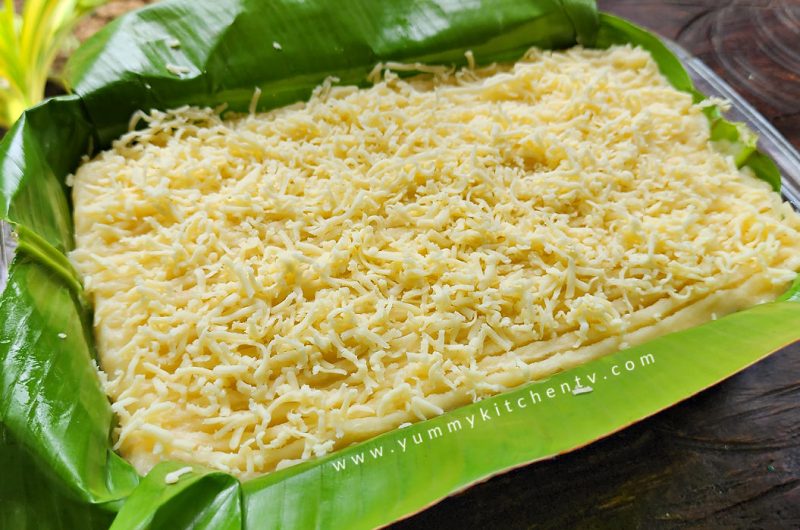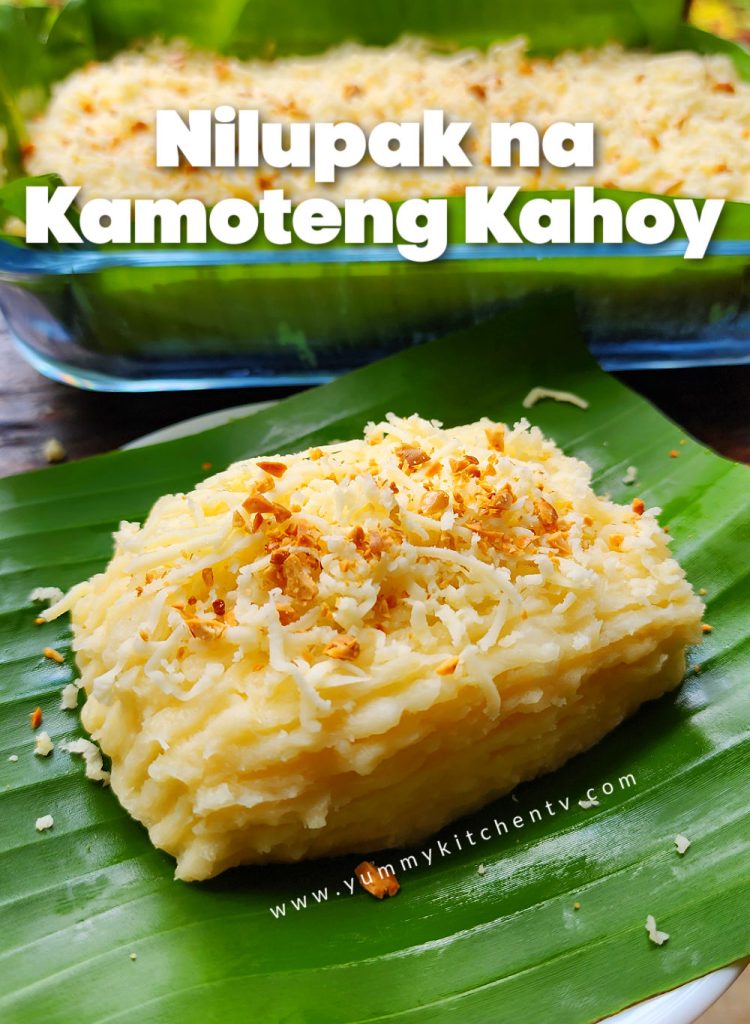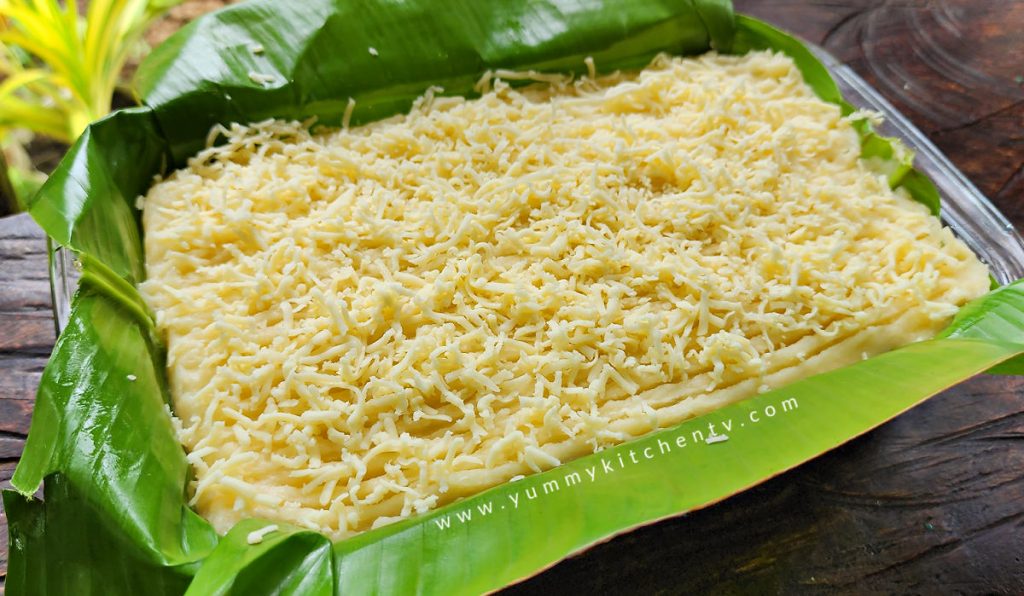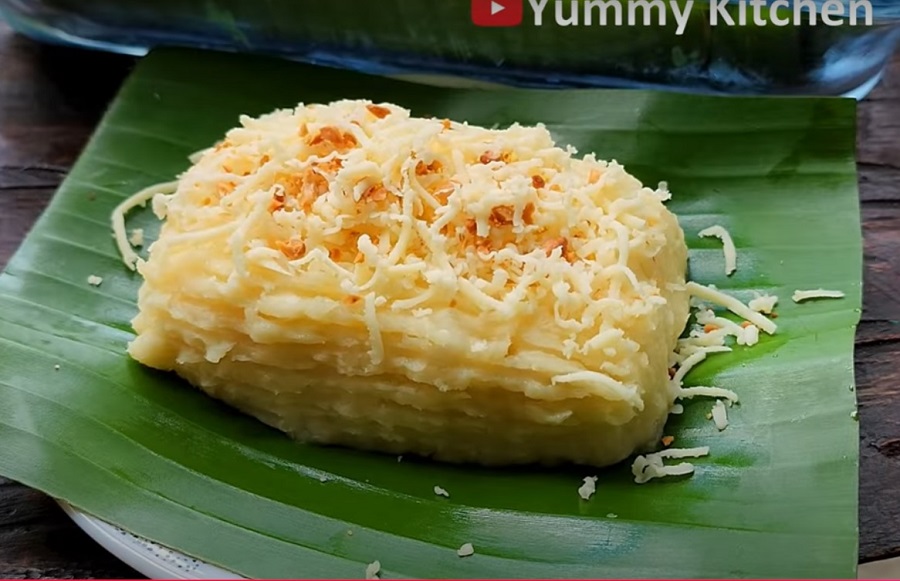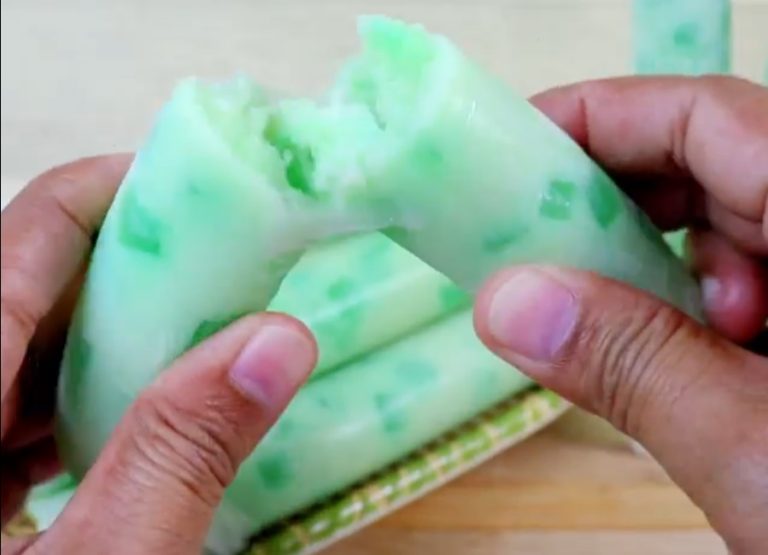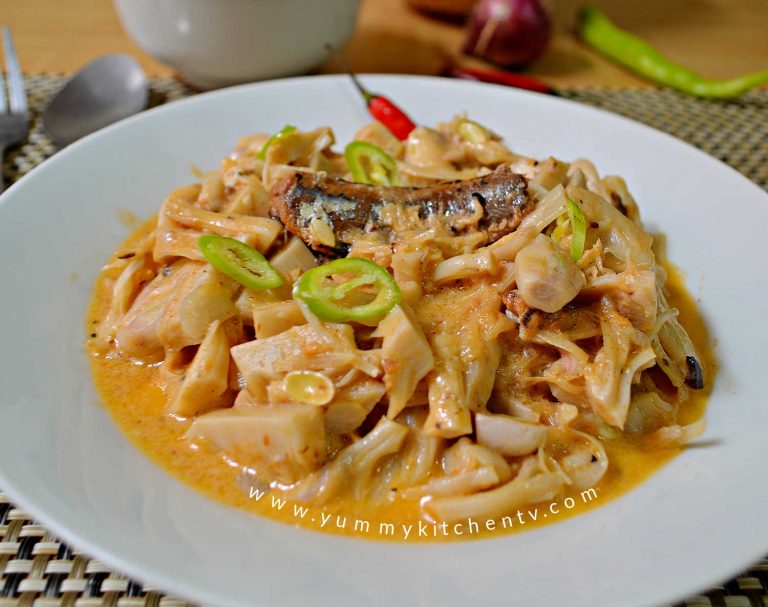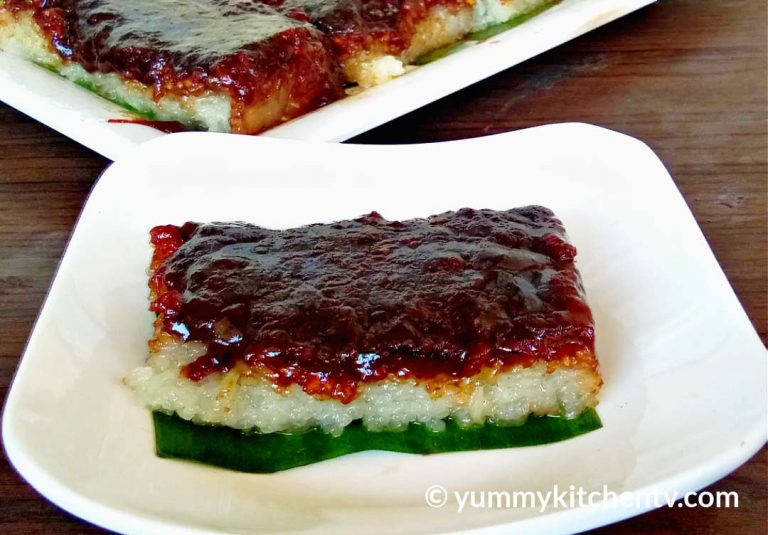Nilupak na Kamoteng Kahoy
Nilupak na Kamoteng Kahoy is a traditional Filipino delicacy made from mashed cassava, mixed with sugar, butter, and condensed milk, then topped with cheese or grated coconut. Its rich, creamy texture and sweet flavor make it the perfect snack or dessert for any occasion. Celebrate the essence of Filipino heritage with every bite of this timeless treat.
#NilupakNaKamotengKahoy #FilipinoDesserts #CassavaTreats #PinoyFood
Nilupak na Kamoteng Kahoy Recipe
Ingredients:
- 1 kilo fresh cassava
- 1/2 cup condensed milk
- 1/3 cup sugar
- 1/4 cup melted butter (or margarine)
- cheese (for toppings)
- chopped peanuts (optional)
Directions:
1. Prepare and peel the cassava. Slice them into manageable chunks and then arrange in a steamer. Steam or boil them until soft.
2. Do the fork test to check if they are tender. Then, mash them using a fork or potato masher.
3. Transfer the mashed cassava to a large bowl. Add the melted butter or margarine, condensed milk, and sugar. Mash violently until well combined, smooth and sticky.
4. Transfer the nilupak to a greased tray or a container lined with oiled banana leaves. Flatten the top using a spatula. Add distinct textures using a fork.
5. Sprinkle some grated cheese and chopped peanuts. Grab a slice of the nilupak na kamoteng kahoy and enjoy this with your afternoon tea or coffee. Yum!
What is Kamoteng Kahoy
Kamoteng Kahoy, also known as cassava or yuca, is a versatile root vegetable that holds a special place in many Filipino kitchens. With its starchy goodness and unique flavor, it plays a starring role in various Filipino dishes and snacks.
While kamoteng kahoy is a popular food item in the market, some people have them interchanged with the sweet potatoes. The main characteristic you can notice between the two is their skin. The kamoteng kahoy has a thick but brittle skin while the sweet potato has a yellow or purple one. This brown skin of the kamoteng kahoy resembles a wood, which I think is the main reason why this is called kamoteng kahoy.
Fun fact: There is a unique way of removing the kamoteng kahoy skins. The easiest way is to use a knife. Carefully cut a shallow, lengthwise incision through the outer peel of the cassava, making sure not to cut too deep into the flesh. Once you have an incision, use the tip of the knife to lift and loosen the peel. Then, grasp the loosened peel and peel it off!
Cassava has a mild, neutral flavor with a slightly nutty undertone. It doesn’t have the inherent sweetness found in sweet potatoes. As the name suggests, sweet potatoes have a sweet taste. The sweetness can vary depending on the variety, but it’s generally more pronounced than cassava.
For this recipe, we will be using the kamoteng kahoy or cassava
Nilupak na Kamoteng Kahoy
As a recipe blog writer, my love for making Nilupak na Kamoteng Kahoy goes beyond the kitchen; it’s a connection to my cherished family memories. You see, Nilupak na Kamoteng Kahoy, or cassava mashed with coconut and sugar, isn’t just a dessert; it’s a taste of nostalgia and tradition that transports me to the heart of the Philippines, even when I’m miles away.
The story of my love for Nilupak began during my childhood summers spent at my Lola’s house in our province. My lolo would wake us up for us to watch him gather his very own kamoteng kahoy rootcrops. He has been waiting for this for month. My Lola would gather us around as she prepared this delightful treat. Her hands, weathered by years of hard work, expertly peeled the cassava, while her eyes sparkled with the joy.
We used to put homemade latik as our toppings for nilupak. I remember the scent of freshly grated coconut mingling with the sweet aroma of sugar as it caramelized in the pan. And the rhythmic pounding of the wooden mortar and pestle, as my cousins and I took turns mashing the cassava, filling the air with laughter and camaraderie.
But it wasn’t just the process; it was the stories that came with it. Lola would regale us with tales of her own childhood, of simpler times when life revolved around family, farmwork, and the joys of cooking. Nilupak was more than a snack; it was a bridge to our roots, a way to preserve the flavors of generations past.
Years later, as I moved away from the province, I found myself craving that taste of home. I started making Nilupak na Kamoteng Kahoy in my own kitchen, guided by Lola’s timeless recipe and the love she poured into every batch. In my small mortar and pestle, I was able to make this nilupak for one.
What I love most about nilupak is that it is very smooth, sweet and very filling. I often enjoy this as an afternoon snack. No need to add sugar to your tea or coffee because the nilupak already provides the sweetness we need to get through the day.
How to Make Nilupak na Kamoteng Kahoy
To make this delicious Nilupak na Kamoteng Kahoy, start by preparing and peeling the cassava, then cut it into manageable chunks before arranging them in a steamer. Remember to remove the white stems in the center as they can ruin the consistency fir later. You can also boil them until they become soft, and a fork can easily pierce through.
Once tender, transfer the cassava to a large bowl and add the melted butter or margarine, condensed milk, and sugar. Traditionally, nilupak is made using a large mortar and pestle where 2 persons are alternately mashing the mix. Now, here’s a hack: instead of mashing it manually, use a hand mixer for a smoother and quicker process. Mix until it becomes well combined, smooth, and sticky. Since I am making a relatively small batch (1 tray only), the sign that the mashing is done is when the nilupak is super sticky, it sticks to the pestle (and when Im tired already HAHA).
Next, transfer the mixture to a greased tray or a container lined with oiled banana leaves. To add an interesting texture, simply use a fork to create unique patterns. Don’t forget to sprinkle some grated cheese and chopped peanuts for that extra flavor. Finally, slice a piece of Nilupak na Kamoteng Kahoy, and it’s perfect to enjoy with your afternoon tea or coffee. Yum!
Other Yummy Cassava Recipes :
- Cassava Balls
- Cassava Suman
- Cassava Cake
- Steamed Cassava Cake (with Costing)
- Cassava Karioka ( Fried Cassava Balls coated in sugar )
Nilupak na Kamotenhg Kahoy Recipe in Tagalog
Mga Sangkap:
- 1 kilo kamoteng kahoy
- 1/2 tasang condensed milk
- 1/3 tasang asukal
- 1/4 tasang tinunaw na butter (o margarine)
- Cheese (pang toppings)
- Chopped peanuts (optional)
Paano Lutuin:
- Ihanda at balatan ang mga kamoteng kahoy. Hiwain ito sa malalaking chunks at ilagay sa isang steamer. Isteam o pakuluan hanggang sa maging malambot.
- Gawin and fork test para malaman kung malambot na. Pagkatapos, durugin ito gamit ang tinidor o potato masher.
- Ilipat ang mashed na kamoteng kahoy sa malaking bowl. Idagdag ang tinunaw na butter o margarina, condensed milk, at asukal. Durugin ito nang mabuti hanggang maging smooth at sticky.
- Ilipat ang nilupak sa serving tray na binrush ng oil o sanmga dahon ng saging na pinahiran ng mantika. Patagin ang ibabaw gamit ang spatula. Magdagdag ng iba’t ibang texture gamit ang tinidor.
- Maglagay ng tinadtad na keso at tinadtad na mani (optional). Kumuha ng isang piraso ng nilupak na kamoteng kahoy at enjoyin ito kasama ng iyong afternoon tea o coffee. Yum!


